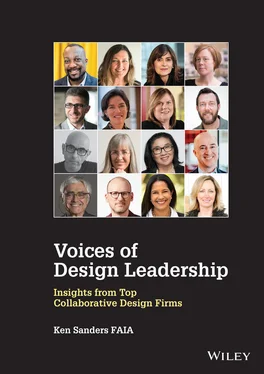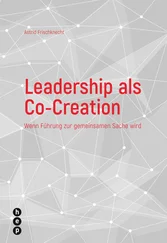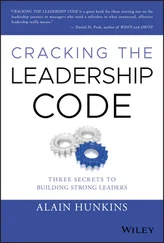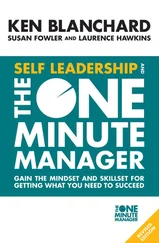Ken Sanders - Voices of Design Leadership
Здесь есть возможность читать онлайн «Ken Sanders - Voices of Design Leadership» — ознакомительный отрывок электронной книги совершенно бесплатно, а после прочтения отрывка купить полную версию. В некоторых случаях можно слушать аудио, скачать через торрент в формате fb2 и присутствует краткое содержание. Жанр: unrecognised, на английском языке. Описание произведения, (предисловие) а так же отзывы посетителей доступны на портале библиотеки ЛибКат.
- Название:Voices of Design Leadership
- Автор:
- Жанр:
- Год:неизвестен
- ISBN:нет данных
- Рейтинг книги:3 / 5. Голосов: 1
-
Избранное:Добавить в избранное
- Отзывы:
-
Ваша оценка:
- 60
- 1
- 2
- 3
- 4
- 5
Voices of Design Leadership: краткое содержание, описание и аннотация
Предлагаем к чтению аннотацию, описание, краткое содержание или предисловие (зависит от того, что написал сам автор книги «Voices of Design Leadership»). Если вы не нашли необходимую информацию о книге — напишите в комментариях, мы постараемся отыскать её.
Voices of Design Leadership
Voices of Design Leadership
Voices of Design Leadership — читать онлайн ознакомительный отрывок
Ниже представлен текст книги, разбитый по страницам. Система сохранения места последней прочитанной страницы, позволяет с удобством читать онлайн бесплатно книгу «Voices of Design Leadership», без необходимости каждый раз заново искать на чём Вы остановились. Поставьте закладку, и сможете в любой момент перейти на страницу, на которой закончили чтение.
Интервал:
Закладка:
Persuasion is hard work, and you will not always prevail. But saying “the client wanted it” is a form of finger-pointing. A better phrase is “we failed to convince the client otherwise.” Always own every decision that your client makes for you, whether you agree with it or not.
Client Experience Mindset
People will forget what you said, people will forget what you did, but people will never forget how you made them feel.
– Maya Angelou
Who are your clients? Your first thought may be the people who hire you. The people to whom you provide services. The ones who pay your invoices. Or more broadly, the users, occupants, and guests of your projects. All of that is true.
My definition of client is broader. Your boss is also your client. Your peers are your clients. Your subordinates are your clients. Your consultants are your clients. Your family is your client. Get it? The idea is simple: treat everyone as your client.
Design leaders are appropriately focused on outcomes: what gets approved, what gets built, what gets recognized, and what makes a difference. Equally important are the experiences of your clients along the way. Client experience mindset means taking the time to deeply understand your client and learn about their life, family, and personal interests. When Maya Angelou speaks of people never forgetting how you made them feel, she is speaking of emotion . And emotional client experiences – both positive and negative – endure long after the completion of a project.
All You Need Is Love
At ZGF, I helped my partner Doss Mabe pursue a project for an arts college in Southern California. As part of the interview and selection process, the prospective client asked for a tour of a recently built project by each competing firm.
I joined Doss and our prospective client for the tour of a recent ZGF project. Doss also invited his client for that project to join us. How did his client greet him when we arrived? With a huge smile and a big hug. “Doss, I’m so happy to see you!” It was the greeting of a client thrilled with her building and her experience. After ZGF was awarded the project, we were told the tour and emotional welcome had made a big impression.
More recently, I had a similar experience touring a Minneapolis law firm office with Deanne Erpelding, a former Senior Vice President at NELSON and now a Workplace Market Leader at Gensler. Deanne’s client greeted her like a close relative: laughing, smiling, and sharing family updates.
The strongest client relationships are not about satisfaction. They are built on trust, friendship, loyalty, and even love. Both Doss and Deanne are examples of successful design leaders with clients who have no problem publicly showing affection toward them. Do yours?
Lehman Brothers
Joe Brancato is Co-Managing Principal of Gensler’s Northeast and Latin America regions and currently serves as Chair of the firm’s Board of Directors. A remarkable client experience story involving Joe began during the global financial crisis.
One Sunday afternoon, Joe was watching football at the home of his client and good friend, a senior real estate executive at Lehman Brothers. The date was Sunday, September 14, 2008. The New York Giants dominated the St. Louis Rams that day, 41–13. But the biggest news broke during the game: Lehman Brothers was planning to file for bankruptcy the following morning. At the time of its collapse, the company was the fourth-largest investment bank in the US, with over 25,000 employees.
Imagine yourself at the home of your good friend – a husband and father – as he watched most of his retirement savings and his job vanish before his eyes. The possibility of future Gensler projects with Lehman Brothers disappeared as well. But the relationship did not. Joe kept in touch with his friend and always returned his calls. After a few months, Joe helped him land a real estate job at a smaller firm – at less compensation – but his friend was grateful for Joe’s help.
His friend subsequently moved on to a better position at another company, and a couple of years later, Joe let him know about a Vice President of Real Estate position opening up at one of the top financial services firms in New York. With Joe’s encouragement and support, his friend applied for the job and was hired. Today, that firm is one of Gensler’s top financial services clients.
Years later, Joe’s friend told him that after the loss of his job, he made calls to other architects as well. But Joe was the only one who always returned them. The story is an illustration of Joe’s loyalty to his friend as well as a tough commentary about architects who pay attention to clients only when they have projects in the pipeline.
The strongest client relationships always extend beyond the project at hand. Just ask yourself two questions. How many of your clients are good friends? And how much attention do you pay to them when they don’t have work for you?
T-shaped Professionals
Collaboration across disciplines is composed of two things. First, empathy. It’s important because it allows people to imagine the problem from another perspective – to stand in somebody else’s shoes. Second, they tend to get very enthusiastic about other people’s disciplines, to the point that they may actually start to practice them. T-shaped people have both depth and breadth.
– Tim Brown 2
“T-shaped” describes a leader with deep expertise in one or more disciplines who also is well-versed at integrating cross-disciplinary teams. The vertical stroke of the letter T represents expertise, while the horizontal stroke represents integration. A T-shaped professional is a vertical expert and a horizontal integrator.
Early in their careers, design professionals typically develop expertise in one or more specialty areas. These might include conceptual design, digital technology, marketing, project management, construction documents, specifications, or others. Later, they may focus on different project types or market sectors: education, sports, retail, hospitality, residential, etcetera. Over time, they are recognized as experts and market leaders. Integrators, on the other hand, see a broader playing field and work to combine expertise in ways that unlock innovation and value.
Two of the world’s most impactful T-shaped leaders are Dr. Jennifer Doudna 3of the University of California at Berkeley and her French collaborator Dr. Emmanuelle Charpentier, who jointly won the 2021 Nobel Prize for Chemistry. The two leaders and their research teams collaborated to develop CRISPR, the gene-editing technology that saw its first significant commercial application in testing and diagnosis of COVID-19. Like many scientific innovations, CRISPR is largely the result of discipline integration: bringing together expertise from chemistry, biology, physics, and manufacturing-at-scale to confront an unprecedented global pandemic.
Each of the design leaders profiled in this book can also be considered T-shaped. Barbara Bouza, President of Walt Disney Imagineering ( Chapter 5), leads an integrated design-build organization with over 100 different disciplines. Billie Faircloth, leader of the transdisciplinary research team at KieranTimberlake ( Chapter 10), is a research expert and integrator. Nader Tehrani, the founder of NADAAA and Dean of the Irwin S. Chanin School of Architecture of The Cooper Union ( Chapter 15), thoughtfully integrates the acts of design and making within his professional practice and academic curricula.
In multi-discipline design firms, T-shaped professionals are essential. Even within single-discipline firms, most teams need to integrate the expertise provided by external consultants. In either case, T-shaped professionals play critical roles in sponsoring design innovation.
Читать дальшеИнтервал:
Закладка:
Похожие книги на «Voices of Design Leadership»
Представляем Вашему вниманию похожие книги на «Voices of Design Leadership» списком для выбора. Мы отобрали схожую по названию и смыслу литературу в надежде предоставить читателям больше вариантов отыскать новые, интересные, ещё непрочитанные произведения.
Обсуждение, отзывы о книге «Voices of Design Leadership» и просто собственные мнения читателей. Оставьте ваши комментарии, напишите, что Вы думаете о произведении, его смысле или главных героях. Укажите что конкретно понравилось, а что нет, и почему Вы так считаете.












